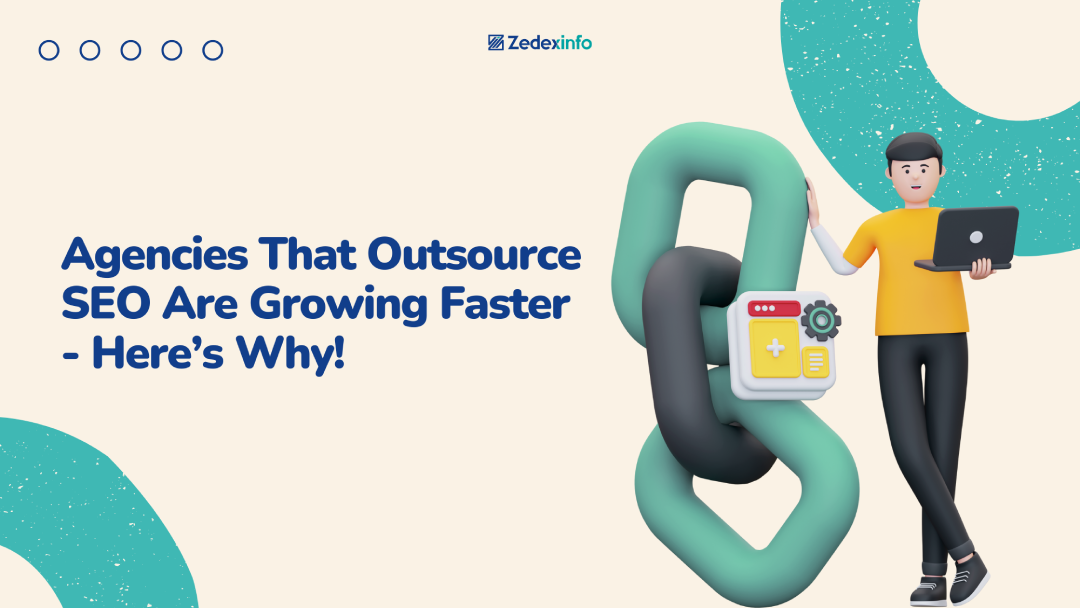If you ask what makes a business a brand, the answer can go beyond just selling the products or service. It is about what people perceive and connect with your business. A logo and catchy lines are just a small part of the branding process. What truly defines your brand is your story, customer experience, and brand voice, which makes your business more than just a name. So, how can you create a brand that truly stands out and connects with your audience? How can your small business create an unforgettable brand identity? Let’s dive in and find out!
What is Brand Identity?
Brand identity is the collection of all elements that a company creates to portray the right image to its consumers. This includes visual aspects like logos, color schemes, and typography, as well as the company’s mission, values, and communication style. A well-defined brand identity helps convey your business’s personality and values, fostering trust and recognition among customers. Here are the key components of brand identity:
Brand Purpose and Values:
Clearly define why your business exists beyond making a profit. Your brand’s purpose and values should reflect the core principles that guide your company and resonate with your target audience. For instance, if sustainability is a key value, ensure that it’s evident in your operations and messaging.
Target Audience Understanding:
Knowing your audience is crucial. Conduct research to understand their needs, preferences, and behaviors. This insight allows you to tailor your brand identity to align with what appeals to your customers, making your brand more relatable and engaging.
Unique Selling Proposition (USP):
Identify what sets your business apart from competitors. Your USP should highlight the unique benefits or features of your products or services, giving customers a compelling reason to choose you over others.
Visual Elements:
Develop a cohesive visual identity that includes your logo, color palette, typography, and imagery. These elements should be consistent across all platforms and materials, creating a recognizable and professional appearance. For example, choosing colors and fonts that reflect your brand’s personality can enhance brand recognition.
Brand Voice and Messaging:
Establish a consistent tone and style in your communication. Whether it’s professional, friendly, or playful, your brand voice should reflect your company’s personality and appeal to your target audience. Consistent messaging helps build trust and reinforces your brand identity.
Why Is Brand Identity Important?
Brand identity is the visual and emotional expression of your business; it’s how customers recognize, remember, and connect with you. For small businesses especially, a strong brand identity builds credibility and trust. It shows that you’re professional, intentional, and here to stay. In a crowded marketplace, brand identity sets you apart from competitors. It helps customers quickly understand what your business stands for and what kind of experience they can expect. From your logo and color palette to your tone of voice and messaging, every element plays a role in shaping perception.
But brand identity isn’t just about appearance, it’s about consistency. When your visuals and messaging align across every platform (website, packaging, social media, etc.), you reinforce your business values and personality. This makes your brand more memorable and emotionally resonant. Over time, a clear brand identity creates loyalty. People aren’t just buying a product or service, they’re buying into your story, your mission, and how you make them feel. That emotional connection turns first-time buyers into repeat customers and even brand advocates.
How to Strengthen Your Brand Identity?
Know Your Audience:
Brand identity works best when it feels like a personal connection. To do that, you need to understand who you’re talking to. Think of your ideal customer as a real person, not just a data point. What do they love? What challenges are they facing? What kind of language do they use? Maybe they’re busy parents looking for quick meal solutions, or they’re Gen Z creators who care about social causes. Once you get to know them, you’ll be able to speak directly to their needs and desires. This helps your brand feel more relatable and builds a connection that goes deeper than just a product.
Research your Competition:
Checking out your competitors doesn’t mean copying them. It means learning from what’s already out there. Take a look at businesses in your space. What kind of colors and messaging do they use? How do they engage with their audience? Do they focus more on visuals or storytelling? This can give you a sense of what’s working and what’s not. More importantly, it helps you spot gaps. If everyone’s doing something one way, maybe there’s a chance for you to do it differently and make a lasting impression. The goal is to stand out while still staying relevant to your industry.
Build a Personality:
Think of your brand like a person walking into a room. How would they speak? What kind of energy would they bring? Are they warm and witty, calm and professional, or bold and rebellious? This is your brand personality. Once you know it, use it in your communication everywhere from your website, emails, social media, product descriptions, to the packaging. People should be able to recognize your tone no matter where they see you. A strong brand voice builds familiarity. Over time, customers start to feel like they know your brand, just like they know a friend.
Design a Visual Identity:
Your visual identity is the face of your brand. It’s what people see first, and we all know how powerful first impressions can be. Start with your logo. It should be clean, memorable, and make sense for your business. Think about your color palette too. Colors influence how people feel. Soft pastels might convey calm and care, while bold reds and blacks scream energy and confidence. The fonts you use should match your tone as well. Friendly brands might go for round, simple fonts. Professional brands may choose sleek, modern ones. And don’t forget imagery. Whether it’s photos or illustrations, be consistent with the style you choose. The goal is for someone to see your visual content and instantly think of your brand.
Leverage Storytelling:
Behind every small business is a story. Maybe it started as a side hustle in your kitchen. Or maybe you left a corporate job to chase your passion. Sharing that story adds depth and emotion to your brand. It’s not about bragging or pretending to be perfect. It’s about being real. Talk about the challenges you’ve faced, the lessons you’ve learned, and the moments that made it all worth it. A genuine story builds trust and loyalty. People want to support brands they can relate to and believe in. So let your story be part of what draws people in.
Your Identity Should Align:
Once your identity is clear, it’s important to keep everything aligned. That’s where brand guidelines come in. This doesn’t have to be a fancy document. Even a simple style guide that outlines your colors, fonts, logo usage, tone of voice, and imagery style can make a big difference. It helps you and your team stay consistent, whether you’re posting on Instagram or printing flyers. Consistency makes your brand feel dependable and polished. Over time, that repetition helps customers remember you without even thinking about it.
Be Consistent:
Speaking of consistency, make sure your brand shows up the same way wherever your audience finds you. From your website to your packaging to your customer support emails, everything should feel cohesive. If your Instagram is fun and casual but your email replies are stiff and formal, it creates confusion. People like knowing what to expect. When every part of your business reflects the same identity, it creates a strong and lasting impression. That trust is what turns one-time buyers into loyal fans.
Build Relationships:
A brand is not a billboard. It’s a living thing that grows with every interaction. Engage with your audience. Reply to comments. Thank people for tagging you. Ask for feedback and actually listen. These small interactions go a long way in showing that you care. You can even create opportunities for customers to be part of your brand story, share their photos, highlight their experiences, or invite them to co-create something with you. When people feel like they’re part of the journey, they’re more likely to stick around and bring others along too.
Keep Evolving as You Grow:
No brand stays the same forever. And that’s a good thing. As your business grows, your audience might shift. New trends may come up, or your own values might evolve. It’s important to check in with your brand identity every now and then. Are you still aligned with your purpose? Is your visual style starting to feel outdated? Are people responding the same way they used to? Stay open to change, but don’t lose sight of what makes you. The strongest brands evolve while staying true to their roots.
Common Pitfalls to Avoid When Building Your Small Business Brand Identity:
Creating a strong brand identity is exciting, but it’s easy to fall into traps that can weaken your efforts or confuse your audience. Here are some of the most common mistakes small businesses make and how you can avoid them.
Inconsistency Across Platforms:
One of the biggest branding mistakes is inconsistency. If your logo looks different on your website, Instagram, and packaging, or if your tone of voice changes from playful to overly formal between posts and emails, it can create confusion. People remember brands when they experience a consistent feeling everywhere. Consistency builds trust, and trust builds loyalty. Without it, even the best visual elements won’t make your brand memorable.
How to fix it: Create brand guidelines and stick to them. These should include your colors, fonts, tone, and how your logo is used across different mediums.
Trying to Appeal to Everyone:
It’s tempting to want everyone to like your brand. But when you try to speak to everyone, you often end up connecting with no one. A generic brand lacks personality and fails to resonate emotionally with any group.
How to fix it: Narrow your focus. Define a clear target audience and build your brand identity around what matters to them. Speaking directly to a specific group makes your brand more authentic and relatable.
Focusing Only on Looks:
A pretty logo and a clean website are great, but a brand is much more than visuals. Without a solid story, purpose, or tone of voice, your brand might look polished but feel empty. People remember how you made them feel, not just how your logo looked.
How to fix it: Balance visuals with meaning. Make sure your messaging, story, and values are just as strong as your aesthetics.
Neglecting Customer Experience:
Your brand isn’t just what you say, it’s what customers experience. A frustrating checkout process, unresponsive support, or poor product quality can damage your brand no matter how great your branding looks on paper.
How to fix it: Pay attention to how customers interact with your business. Every touchpoint from your emails to your packaging should feel thoughtful and aligned with your brand promise.
Copying Competitors:
It’s useful to research competitors, but mimicking their branding makes you blend in, not stand out. A brand that looks or sounds just like others in the market won’t be remembered.
How to fix it: Take inspiration but focus on what makes you unique. Maybe it’s your origin story, your product philosophy, or your personality. Let that uniqueness shine in your branding.
Conclusion:
Building a strong brand identity isn’t about having the flashiest logo or the trendiest colors. It’s about creating something real, something people can trust, remember, and connect with. Your brand is the feeling your business leaves behind. It’s in the way you speak to your customers, the promises you keep, and the values you stand for. Whether you’re just starting out or looking to rebrand, take the time to define who you are and how you want the world to see you. The more effort you put into shaping and maintaining your identity, the stronger your business will grow.




